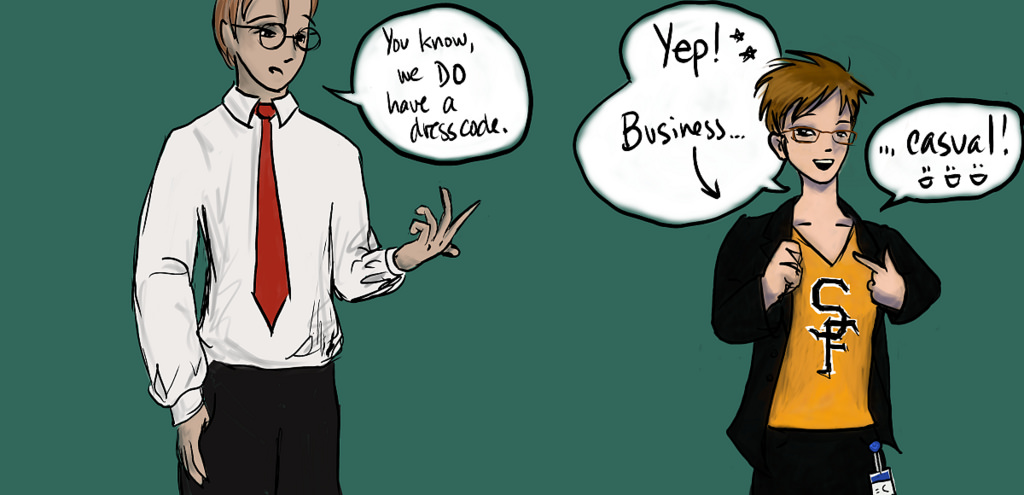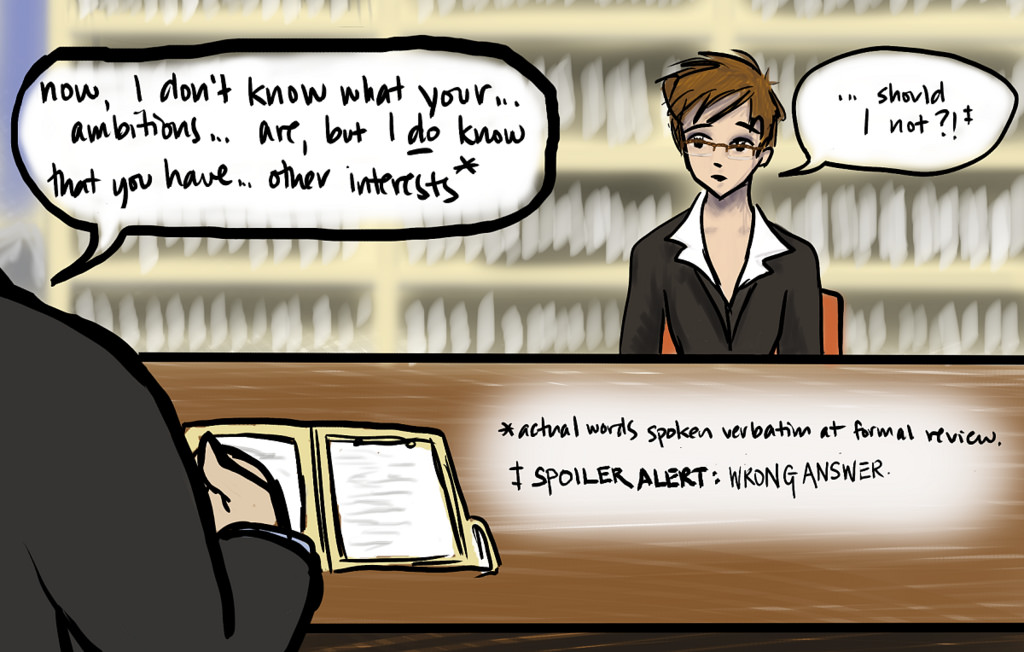It’s a familiar story: the graduate who takes the safe route after college – going along an established career path to a comfortable job, and maybe letting some former passions fall by the wayside. One day they wake up and realize that they never play the guitar any more, or they don’t write as much as they used to, and suddenly their job doesn’t seem so fulfilling.
What isn’t so familiar is when people actually do something about their regrets. Catherine, a New York lawyer in her early 30’s, knew she needed to make a change. So she quit her job at a high-powered law firm to pursue art- and documented it all in cartoons.

Catherine’s website departurememo.com is a cartoon strip that depicts her battle—spanning across multiple years and two cities—to keep her passion for painting alive in the world of finance law, and her eventual decision to pursue that passion full-time. (Catherine chose not to reveal her full name to avoid harming her past employer’s reputation.)
“Art is something that I’ve always enjoyed doing,” Catherine tells TIME. “It’s enough of a constant throughout my life that I’ve really gotten to thinking in the past few years that maybe this is something more than what I do when I have free time.”
Her website also documents that her entry into the legal world was less than enthusiastic. “Like many of my friends and classmates and colleagues, I had gone to law school fairly aimlessly in my mid-20s with no real plan other than the well-beaten path: do appreciably (if not well), Biglaw, pay off loans, then see where the cards fell,” departurememo.com reads.

However, as her illustrated memo shows, the “well-beaten path” didn’t suit Catherine very well, and the time she had to dedicate to her life-long passion for art became minimal. “People here are really talented. Unfortunately, for many people, the talents from our past lives now merely take the form of s**t we hang on our walls. It’s the ‘used to’ syndrome,” she writes on her website.
This problem led to her decision to make a career change, and the comic seemed the most fitting way to explain it. “I had a few exchanges that I’ve memorialized in the memo that seemed to me to be too funny, or I just felt that they would work really well in a kind of comic format,” Catherine says. “I felt that it would be relatable. I wanted to do something funny and memorable that the people would enjoy.”

She sent it to a couple dozen of her co-workers and hoped word of mouth would spread the cartoon around her office. The results were more successful than she’d anticipated. The website was even featured in Yahoo and the legal blog “Above the Law.” She says, “Apparently it struck a chord with a lot of people. I’m just really impressed, really amazed at the reception it got, how far and wide it’s been passed around.”
Catherine’s memo is not the first creative representation for quitting a job. Last September, 25-year-old Marina Shifrin filmed a dance video to Kanye West’s “Gone” to explain her decision to quit her animation job. “For almost two years I’ve sacrificed my relationships, time and energy for this job,” Shifrin wrote in the video.
“Everyone’s had to cancel plans, been pushed into projects that are a mismatch for their interests, worked terrible hours, and so forth,” Catherine said. “Probably quite a few people have wished they could say what was really on their mind when they left, but few do.”
For those like Shifrin who might find the cartoon all too relatable, Catherine has some advice. “I think that there is so much talent out there, and people should absolutely cultivate their talents…and spend time supporting other artists and creative people,” she says. “Everyone can make something, but if we don’t spend time supporting one another, then it’s kind of a dead end for everyone.”
Catherine will find her own creative support community in a month-long artists’ residency program before returning to San Francisco, where she has settled. “Basically the plan there is to clear my head and paint, really not to have to worry about too much else other than figuring out with paintbrushes and paint what I have to say at this point,” she says. “And I’m really open to whatever may come.”

More Must-Reads from TIME
- Donald Trump Is TIME's 2024 Person of the Year
- TIME’s Top 10 Photos of 2024
- Why Gen Z Is Drinking Less
- The Best Movies About Cooking
- Why Is Anxiety Worse at Night?
- A Head-to-Toe Guide to Treating Dry Skin
- Why Street Cats Are Taking Over Urban Neighborhoods
- Column: Jimmy Carter’s Global Legacy Was Moral Clarity
Contact us at letters@time.com